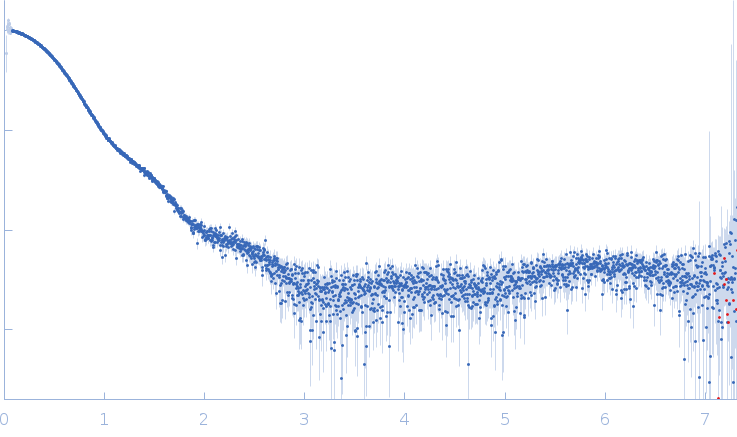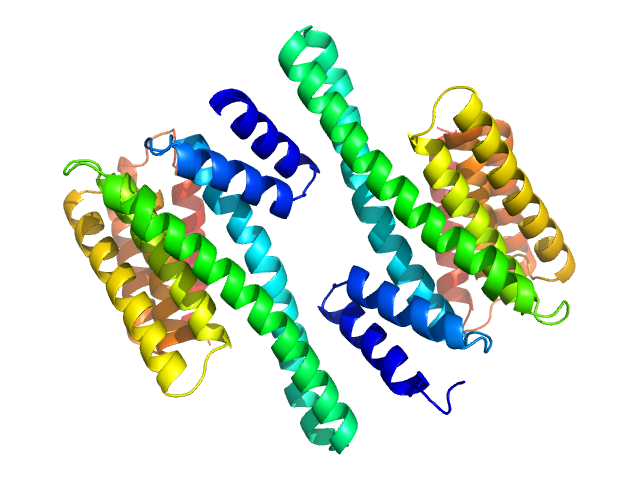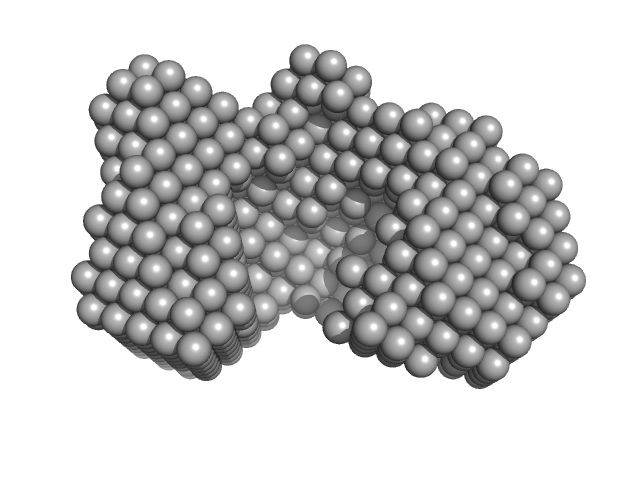|
Synchrotron SAXS data from solutions of human phosphorylated CaMKK1 bound to 14-3-3 gamma in 50 mM Tris-HCl, 150 mM NaCl, 1 mM TCEP, 3% (w/v) glycerol, pH 7.5 were collected on the EMBL P12 beam line at PETRA III (DESY; Hamburg, Germany) using a Pilatus 2M detector at a sample-detector distance of 3 m and at a wavelength of λ = 0.123987 nm (I(s) vs s, where s = 4πsinθ/λ, and 2θ is the scattering angle). In-line size-exclusion chromatography (SEC) SAS was employed. The SEC parameters were as follows: A 48.00 μl sample at 6 mg/ml was injected at a 0.30 ml/min flow rate onto a GE Superdex 200 Increase 5/150 column at 20°C. 1320 successive 0.495 second frames were collected. The data were normalized to the intensity of the transmitted beam and radially averaged; the scattering of the solvent-blank was subtracted.
|
|
 s, nm-1
s, nm-1

